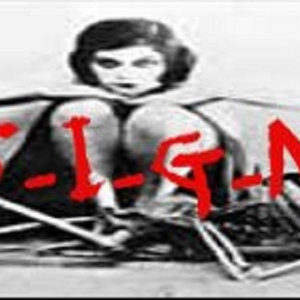Méhlegelő by András Wahorn Meets Abstract Household Warfare
Tracklist
| 1. | Fotoszintézis | 12:25 |
| 2. | Innentől Bogyósodásig Semmi | 8:22 |
| 3. | A Második Agrárökonómiai Vállság | 3:05 |
| 4. | Wetésforgó | 3:25 |
| 5. | Harapáspróba | 13:31 |
Credits
released February 1, 2024
Artwork By – András Wahorn
E-Bow – Tim Holehouse (tracks: B3)
Electronics – András Wahorn, Rovar17, Xpldnglke
Guitar – Tim Holehouse (tracks: B3)
Mastered By – Rovar17
Saxophone – András Wahorn
Sounds – Rovar17, Xpldnglke
Vocals – Tim Holehouse (tracks: B3)
----------------------------------------------------------------------------------------------
This cassette is my first encounter with saxophone player András Wahron, who invited some players to his barn; these include the electronics of Rovar17 and Xpldnglke, plus the guitar and vocals, Tim Holehouse on one track. Wahorn also plays electronics. That’s about all we know, next to some mastering and artwork credits. The music is a curious mix of quite experimental electronics, not all too loud or noisy, creating dense atmospheres on top of that muted saxophone sound from the world of doom jazz. There is some reverb used to suggest more space than we knew was necessary to get the point across, and it’s a bit too much. That whole doom jazz/film noir sound is not something for me. I find this a well-worn cliche, and if it weren’t part of this swamp-like electronics, muddy, without details, suppressed noise, I would probably dismiss the whole thing. Still, it’s these electronics that save the day. If the idea of doom jazz is to play something unnerving and spooky, then this tape is the place to be, but in general, there is the electronic side. The saxophone is often put towards the back, but all music here sounds muffled. Maybe it’s the barn/shed setting where they recorded the music, a more lo-fi studio type. The pieces are long and could have benefitted from some editing. On the other hand, it is also a documentation of a work in progress, which is perfect for this medium. (FdW)
www.vitalweekly.net/number-1443/
----------------------------------------------------------------------------------------------
Az Abstract Household Warfare (vagyis Rovar17 és Xpldnglke) Wahorn Andrással készítette Méhlegelő című lemezét (aki szaxofon mellett elektronikán is játszik). A kazettán is kijött album egy alapvető kontrasztra épül: a folyamatosan kavargó, puttyogó, csipogó, zörmögő, zajongó elektronika és az elnyújtott, lebegős, effektezett szaxofon olyan jól kiegészíti egymást, hogy végig izgalmas marad a zene. Az utolsó szám aztán drone-ba fordul (ez az egyetlen, aminek nem agrártematikájú címe van), itt gitár és torokéneklés is hallható Tim Holehouse-tól. (Rónai András)
recorder.blog.hu/2024/06/27/igaz_magyarkent_nem_keresem_a_dolgok_okat_rec_hu
Artwork By – András Wahorn
E-Bow – Tim Holehouse (tracks: B3)
Electronics – András Wahorn, Rovar17, Xpldnglke
Guitar – Tim Holehouse (tracks: B3)
Mastered By – Rovar17
Saxophone – András Wahorn
Sounds – Rovar17, Xpldnglke
Vocals – Tim Holehouse (tracks: B3)
----------------------------------------------------------------------------------------------
This cassette is my first encounter with saxophone player András Wahron, who invited some players to his barn; these include the electronics of Rovar17 and Xpldnglke, plus the guitar and vocals, Tim Holehouse on one track. Wahorn also plays electronics. That’s about all we know, next to some mastering and artwork credits. The music is a curious mix of quite experimental electronics, not all too loud or noisy, creating dense atmospheres on top of that muted saxophone sound from the world of doom jazz. There is some reverb used to suggest more space than we knew was necessary to get the point across, and it’s a bit too much. That whole doom jazz/film noir sound is not something for me. I find this a well-worn cliche, and if it weren’t part of this swamp-like electronics, muddy, without details, suppressed noise, I would probably dismiss the whole thing. Still, it’s these electronics that save the day. If the idea of doom jazz is to play something unnerving and spooky, then this tape is the place to be, but in general, there is the electronic side. The saxophone is often put towards the back, but all music here sounds muffled. Maybe it’s the barn/shed setting where they recorded the music, a more lo-fi studio type. The pieces are long and could have benefitted from some editing. On the other hand, it is also a documentation of a work in progress, which is perfect for this medium. (FdW)
www.vitalweekly.net/number-1443/
----------------------------------------------------------------------------------------------
Az Abstract Household Warfare (vagyis Rovar17 és Xpldnglke) Wahorn Andrással készítette Méhlegelő című lemezét (aki szaxofon mellett elektronikán is játszik). A kazettán is kijött album egy alapvető kontrasztra épül: a folyamatosan kavargó, puttyogó, csipogó, zörmögő, zajongó elektronika és az elnyújtott, lebegős, effektezett szaxofon olyan jól kiegészíti egymást, hogy végig izgalmas marad a zene. Az utolsó szám aztán drone-ba fordul (ez az egyetlen, aminek nem agrártematikájú címe van), itt gitár és torokéneklés is hallható Tim Holehouse-tól. (Rónai András)
recorder.blog.hu/2024/06/27/igaz_magyarkent_nem_keresem_a_dolgok_okat_rec_hu
License
All rights reserved.Recommendations
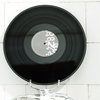 Moiré gyermekei – Electronic music from Humgary ~ 1992-2011.
Moiré gyermekei – Electronic music from Humgary ~ 1992-2011.by Moiré Kollektíva
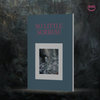 059 'So Little Sorrow'
059 'So Little Sorrow'by Simon J Karis
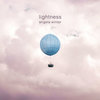 lightness
lightnessby Angela Winter
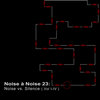 Noise à Noise 23: Noise vs. Silence (Vol. I-IV)
Noise à Noise 23: Noise vs. Silence (Vol. I-IV)by Various Artists
 bivouac of the avant-garde: contemporary minimal, electronic and experimental music, vol.2
bivouac of the avant-garde: contemporary minimal, electronic and experimental music, vol.2by Difficult Art And Music
 Cataclysmic System Binding Loss
Cataclysmic System Binding Lossby Carbon In Prose

